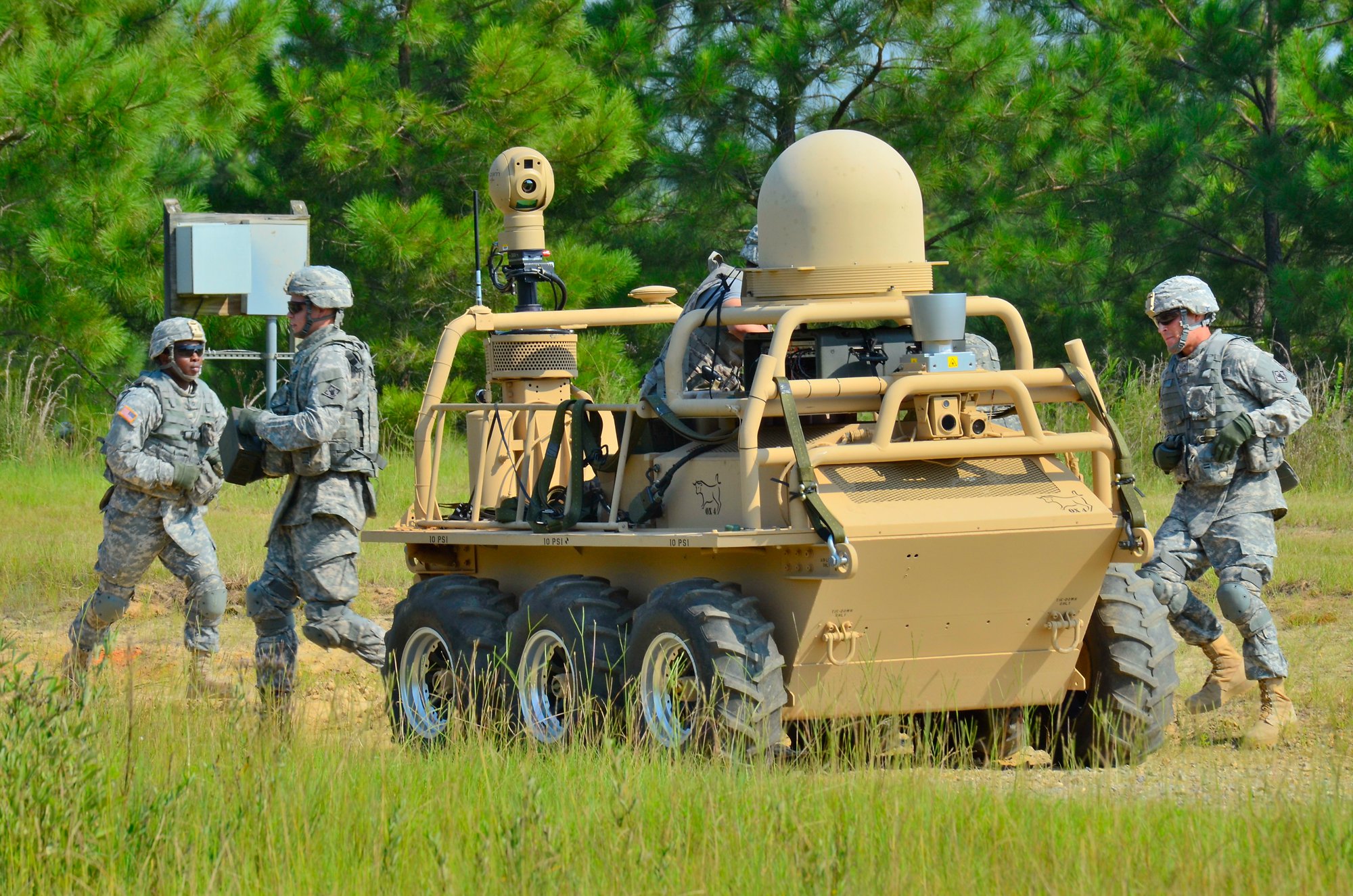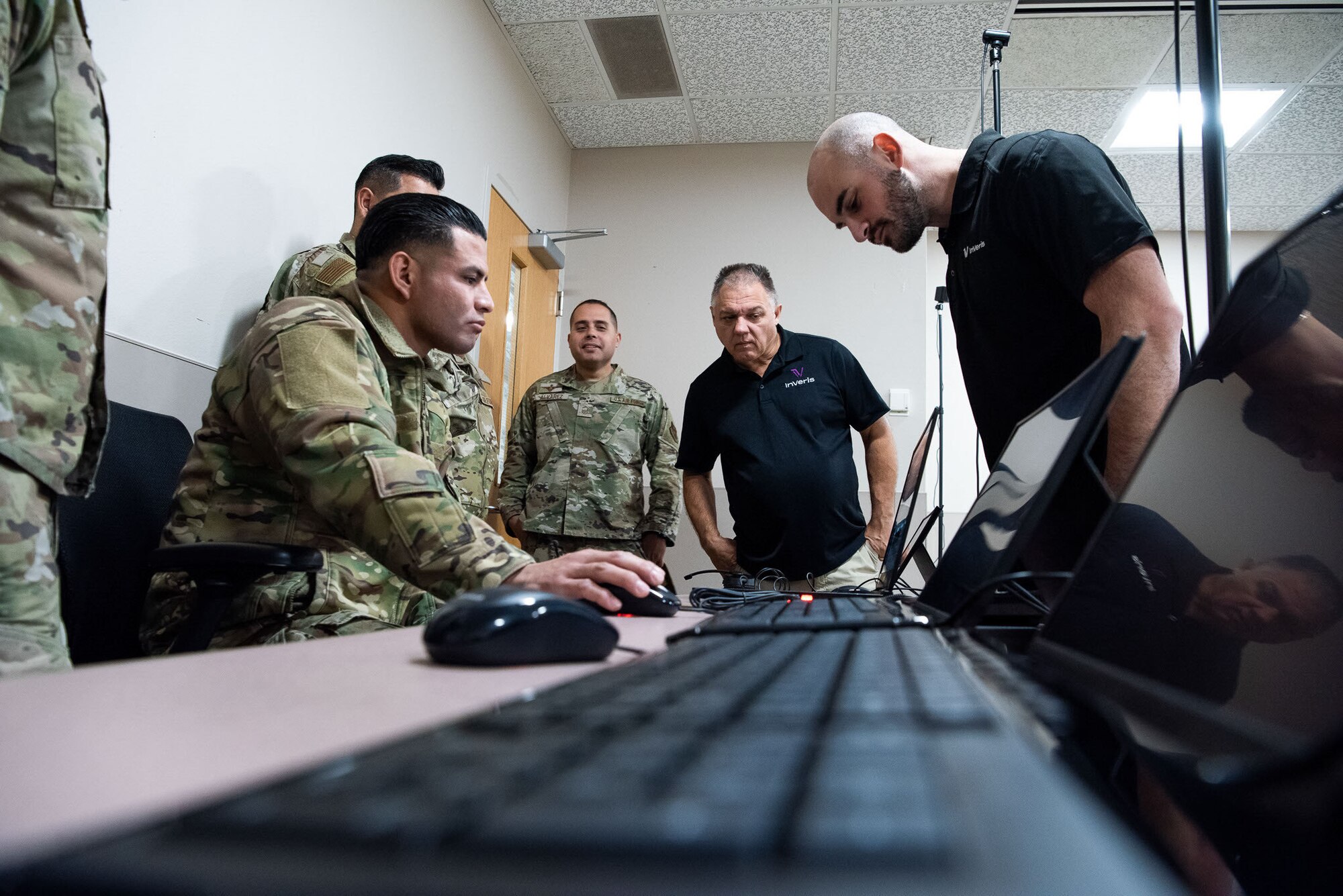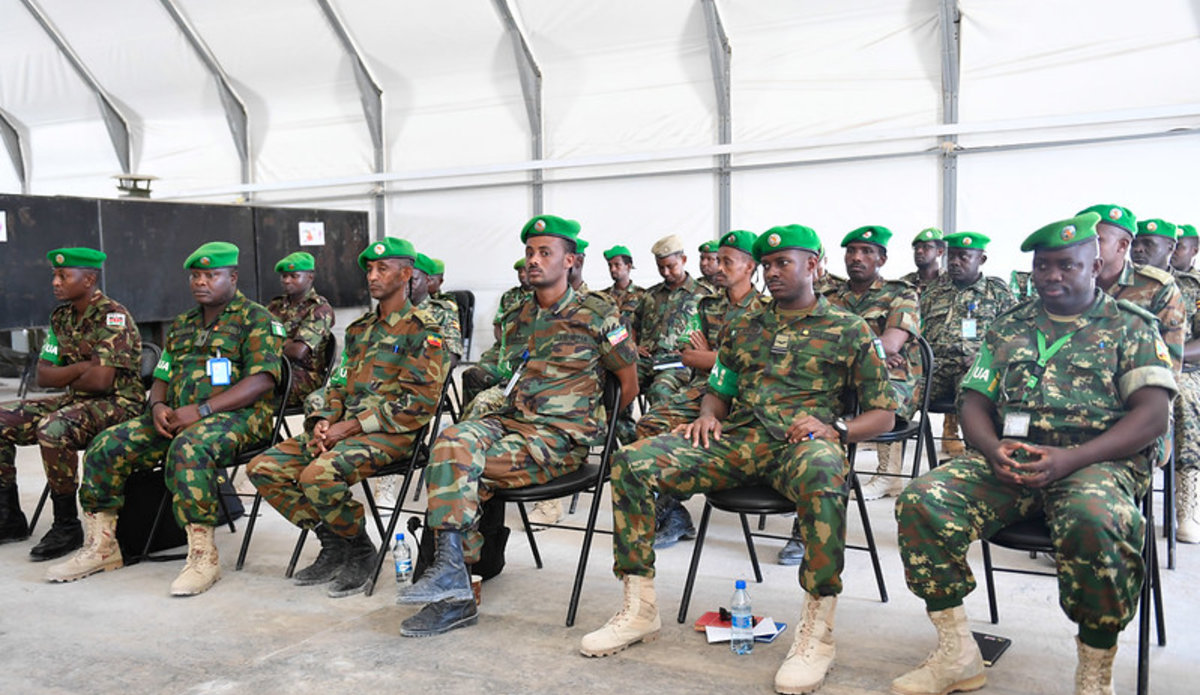Military Training Technology - The partnership now conducts Combined Air Operations (COMAO), Helicopter Tactics (HTC) courses, Helicopter Tactics Instructor Courses (HTIC) and Electronic Warfare (EW) courses throughout the year. A total of 12 courses are held per year with 220 students.
In the face of changing social and political threats and systems, along with rapid technological advances, the military sector is facing major changes and challenges. It is critical to ensure that military personnel - from top to bottom - are armed with the necessary skills and capabilities to meet these challenges;
Military Training Technology
 Source: data.militaryembedded.com
Source: data.militaryembedded.com
Effective training is essential. Because VR training can also combine touch technology, it's a great tool for activity-related training, such as weapon handling, as well as potentially life-threatening activities like skydiving. It can also help personnel get used to working with and in claustrophobic military equipment environments, such as submarines and tanks.
The Future Of Military Training
Until the late 16th century, when advances in transportation technology broke down the barriers between them, the world contained a variety of militarized environments. The most specific of these were based in Central America, Japan, India, Southeast Asia, China and Europe.
(In this context, Europe includes the entire Mediterranean basin and the watershed of the Tigris and Euphrates rivers.) With the rise of the archer in Late Antiquity, the Eurasian steppe also became a distinctly militaristic sea.
Indian startup Niral Networks provides private 5G infrastructure for last mile connectivity. The open and detailed network operating system, NiralOS, facilitates edge computing and 5G products. NiralOS integrates with any white box ready device. For defense organizations, 5G infrastructure enables rapid and cost-effective digital transformation on all fronts.
In November 2020, the UK government revealed that it had increased its military spending by £16.5 billion; The most important investment of a generation. With the primary goal of ensuring that the armed forces develop a "digital backbone", innovative VR training solutions can provide the key to solving skills issues in response to the challenges of rapid growth and change.
Activity-Based Training
"The important thing we realize with this system is that the simulation we provide at the beginning of the training will most likely not be the same at the end of the program," says Steve Phuket, Typhoon pilot and
Inzpire's Head of Technology Delivery. Your training requirements and tactics will change; it must be The simulator is able to change with it.” VET TEC is designed to help veterans obtain short-term technical training without using their GI Bill® benefits.
 Source: insights.sei.cmu.edu
Source: insights.sei.cmu.edu
If you are a veteran with at least one day of unexpired GI Bill® benefits, you may qualify, subject to VA approval. From maintenance engineers to helicopter pilots to bridge officers and beyond, maritime organizations around the world have offered virtual reality training to ensure ship personnel are aware of the complex equipment they encounter.
The defense sector is facing major changes as we move from the industrial age to the digital age. As advances in technology and communications lead to a shift from hardware-driven defense strategies to data-driven defense solutions, VR training tools allow individuals to address the challenges that technological changes pose to daily work conditions.
Niral Networks Builds Private G Infrastructure
Ironically, despite two decades of US-led conflict in Afghanistan and Iraq, it only took a few months of Russia's war in Ukraine to finally highlight the depleted state of US weapons stockpiles and weaknesses in US military supply chains.
In recent months, US military leaders have expressed growing frustration with the defense industrial base. As Admiral Mike Gilday, the U.S. Navy's top officer, told Defense News in January, "I'm not just trying to fill the magazines with weapons, but I'm trying to put American production lines at their maximum level right now and try to maintain that set of headlights in
subsequent budgets." So we can continue to produce these weapons." Gilday noted that the fighting in Ukraine made it clear to military commanders "that the cost of these advanced weapons in the conflict could be higher than we anticipated." More generally, technology affects a nation's
ability to finance wars and supply the battlefield. It can do this by enabling strong war economies or by revolutionizing the manufacture and production of weapons—ideally by doing both. During the Industrial Revolution, the manufacture of machinery and steam engines made possible
Virtual Naval Ships
mechanized warfare and the production of vast arsenals. Railroad investment facilitated economic expansion while lowering the cost of mobilizing large armies, allowing states like Prussia to rely on a rapidly deployed reserve force rather than maintaining an expensive standing army. Air Force Col. Jason M.
Brown is commander of the 480th Intelligence, Surveillance and Reconnaissance Wing, based at Join t Base Langley-Eustis, Virginia. The opinions expressed are those of the author and do not necessarily reflect the views of the US Air Force or the Department of Defense.
 Source: www.designworldonline.com
Source: www.designworldonline.com
The military gave the United States the Internet and the Global Positioning System. He broke the sound barrier and created a global intelligence network that today keeps our nation safe. We remain the most advanced and capable military in the world.
But resting on our laurels or the technology being copied by our competitors is no longer enough - it's time to reboot. That innovative spark is especially cool among military millennials. The Armed Forces will always value and cultivate discipline, compliance, decency and many other habits.
An Effective Response To Technological Changes
The Ministry of Defense should place a similar value on innovation in its ranks. This article traces the development of military technology by historical period, from prehistoric times to the eighteenth century. For a discussion of modern military technology, see small arms, artillery, missile and missile systems, nuclear weapons, chemical warfare, biological warfare, fortification, tanks, naval vessels, submarine, military aircraft, warning system, and military communications.
It is important to develop better technology, but we must be careful because technology that focuses exclusively on military equipment is unlikely to be the best we have. Somehow, our opponents will fit into high-tech equipment that we build well before we turn it on.
This does not mean that we should not pursue such techniques. Instead, we must recognize that information is now ubiquitous, and high-tech hardware alone is unlikely to result in a decisive advantage over nation-state competitors or their proxies.
Since the end of the Cold War, the Pentagon has invested in technology that reduces casualties but does not reduce workforce costs. It has spent heavily on expensive and scarce first-strike technologies, largely ignoring the impact of such spending on its ability to finance wars and secure supply chains.
On The Ground Battlefield And Combat Training
Thirty years after this technological push, the United States lacks the technology and resources to maintain support for Ukraine at current levels, let alone deter China from invading Taiwan. Armies around the world use virtual reality for combat training and combat training.
Virtual reality can provide a photorealistic digital rendering of complex environments, giving soldiers a safe way to learn how to engage with the enemy while dealing with external factors such as the presence of civilians, as well as different conditions, including different times of

day and weather challenges. Through virtual reality training, soldiers can learn to handle high-stress situations and improve a range of skills, from effective communication to decisive combat techniques. It can also help them learn how to deal with hostile environments, such as suicide bombers or sniper attacks.
The Pilot Training Next program highlights how virtual reality can help train individuals at scale by bridging the gap between classroom learning and expensive (and limited) traditional simulations. I have simplified how the USAF trains novelty pilots with HTC VIVEs along with additional equipment to replicate the virtual cockpit.
Immersive Technologies
Combined with advanced biometrics and artificial intelligence, the program allows trainees to practice techniques that can be effectively monitored and evaluated. In addition to the advancements in VR training that have occurred in the healthcare industry over the past few years, VR military medical training can provide trainees with an opportunity to hone their medical skills in a risk-free environment.
By replicating hostile work environments, such as hectic and stressful combat scenarios, VR training can help military medics practice split-second decision-making when treating patients facing life-threatening injuries such as limb loss and burns. Immersive technologies make it easier to build flexible and repeatable experiences, such as flight or combat training.
Startups are using virtual reality (VR) to build synthetic training environments (STE). These experiences augment conventional training and mission rehearsals and improve Soldier and unit readiness. In addition to training opportunities, augmented reality (AR) makes soldiers in the field more effective in their missions.
Wearable glasses or AR headsets provide soldiers with map information, movement markers and other data. This would improve real-time situational decision-making for land forces. If you're looking to gain computing experience to start or advance your career in the high-tech industry, find out if you qualify for the Veteran Employment Through Technology Education Courses (VET TEC) program, which matches you with a leading education provider to help
Red Offers Ar-Based Combat Training
you to develop high-tech skills. Priest explains: "For example, if the Portuguese are stationed in Africa between courses, we can change the environment and the fidelity target means we can build that city and our own training area and that war zone. Target accuracy also applies to hardware and software."
The American company Red 6 is developing the Air Tactical Augmented Reality System (ATARS), an AR-based combat training solution. The system combines augmented reality and artificial intelligence for military training applications in air combat. It brings virtual and constructive assets into the real world, allowing pilots and operators on the ground to see real-time threats in synthetic, outdoor and high-speed environments.
 Source: unsos.unmissions.org
Source: unsos.unmissions.org
This technology is scalable for multi-domain operations and helps squadrons improve readiness and lethality. Militaries are increasingly dependent on equipment, but operational capability still depends on people. Advances in technology change not only the way wars are fought, but also the people who fight them.
This can only mean one thing: the training also needs to change. Slovak startup 3IPK offers operations management system for the defense and aerospace industries. It combines blockchain, data analysis and artificial intelligence. The solution automates the supply chain and maintenance operations.
Ipk Provides Blockchain Process Management
Furthermore, it enables smart contracts that increase traceability and transparency, leading to efficient process management and quality control. The military technology and startup trends outlined in this report only scratch the surface of the trends we identified during our in-depth research.
Among other technologies, brain-computer interfaces, militarization of space and nanotechnology will transform the sector as we know it today. Identifying new opportunities and new technologies to apply in your business at an early stage goes a long way in achieving a competitive advantage.
Get in touch with us to easily and comprehensively explore the technologies and startups that interest you. The US was still fighting high-tech, expensive wars, but it had been doing so for two decades and at a cost of over $10 trillion.
While the rebels produced cheap improvised explosive devices, rocket-propelled grenades and mortars, the US launched $150,000 worth of Hellfire missiles from $30 million remote-controlled drones, dropped $25,000 precision munitions from a $75 million stealth aircraft and spent $45 billion dollars.
Activity-Based Training
on a battalion of armored personnel carriers - connecting all these systems to satellites at a cost of hundreds of millions to billions of dollars. Even as the number of US military personnel shrank, the average cost per
per capita for the elite mutant force made up of volunteers by more than 60 percent between 2000 and 2012. The war was already less bloody than before, but it didn't come cheap, and it didn't come cheap either.
 Source: vrvisiongroup.com
Source: vrvisiongroup.com
Victory comes quickly or decisively. Because VR training can also combine touch technology, it's a great tool for activity-related training, such as weapon handling, as well as potentially life-threatening activities like skydiving. It can also help personnel get used to working with and in claustrophobic military equipment environments, such as submarines and tanks.
Indian startup Accreate Labs prints aerospace-grade components for the aerospace and defense sectors. Through additive manufacturing, the startup makes complex end-use parts as well as custom manufacturing tools such as jigs and fixtures. The startup's solutions improve factory productivity and worker safety, as well as making the production process cost-effective.
Accreate Labs Offers Aerospace-Grade Components
Virtual reality is also used as an orientation training tool by the Royal Navy. Personnel bound for the Queen Elizabeth Class (QEC) aircraft carriers can learn about the ship's layout, including the location of key pieces of safety equipment, as well as escape and evacuation routes, before setting foot on the ships.
The training program also tests the user's response to emergency scenarios, including handling injuries, fires and employment pressure leaks. If you want to see one of the fundamental ways in which war has changed, you should visit our pilots who work in windowless buildings the size of warehouses scattered around the world.
They run something we call the Distributed Common Ground System, which is military parlance for a large network that provides real-time data to Air Force intelligence analysts. Analysts are working around the clock to stay in touch with U.S. forces fighting the Islamic State while monitoring global hotspots.
The American startup Rebellion manufactures mission-focused AI products for the defense and security sector. The startup uses machine learning and the power of data to deter threats and drive mission success. Subscription-as-a-Service model software products are used to achieve comprehensive battlefield awareness, autonomous mission execution and electronic readiness.
Rebellion Offers Mission-Focused Ai Products
The user-centered software designs are built on an open architecture and are therefore compatible with existing hardware and software systems. The importance of geographic and topographical factors, along with limited means of communication and transportation, means that separate geographic regions tend to develop unique military technologies.
These areas are called the military atmosphere. Military environmental perimeter boundaries can be physical barriers, such as oceans or mountain ranges; It can also be changes in military terrain, the combination of terrain, vegetation, and man-made features that can make a particular technique or tactic effective or ineffective.
Military systems are often vulnerable to cyber-attacks that can lead to the loss of classified military information and damage to military systems. Over the past several years, the frequency and severity of cyber attacks has steadily increased.
Prescriptive security technology uses cybersecurity, artificial intelligence, and automation to detect and stop potential threats before they affect defensive cyber warfare. The security of military connected equipment, the electronic protection of large organizations as well as in nuclear security are the main areas of focus.
Cyber Warfare
Militaries are also developing offensive cyberwarfare capabilities that range from malware and ransomware to phishing attacks.
military technology magazine, new us military technology, latest military weapons and technology, modern military technology, military technology news, advances in military technology, latest military technology, military technology today
0 Comments